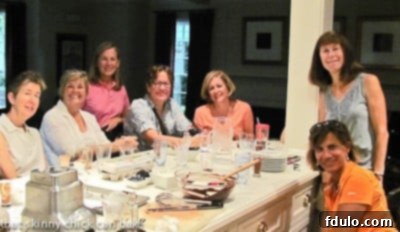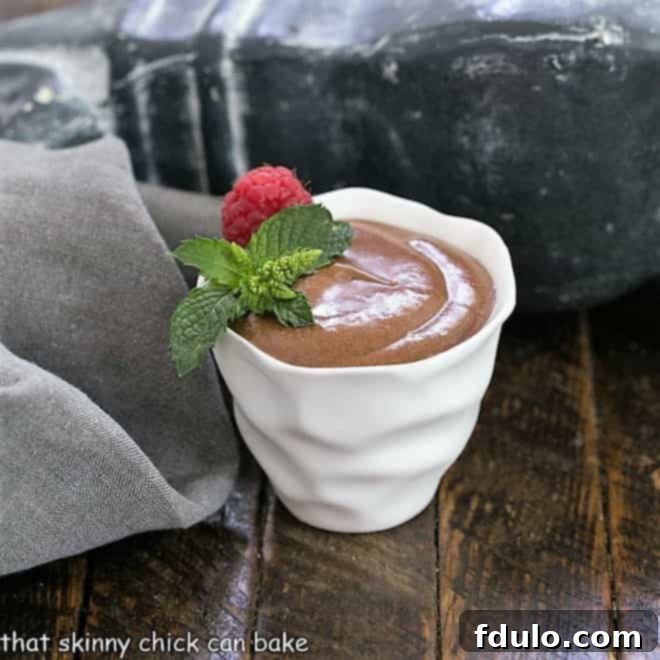Welcome to the definitive guide for mastering Julia Child’s French Chocolate Mousse Recipe, a timeless classic that epitomizes elegance and exquisite taste. This isn’t just any dessert; it’s a culinary masterpiece that stood triumphant in a rigorous blind taste test, acclaimed for its unparalleled silky smoothness and rich, decadent flavor. Prepare to embark on a delightful journey to craft a dessert that tastes straight out of a Parisian patisserie.
While this authentic Mousse au Chocolat might require a few bowls and a bit more attention to detail, the truly luscious results are unequivocally worth every extra moment in the kitchen. Forget complicated methods or compromise on flavor – this guide will teach you exactly how to make chocolate mousse the traditional French way, ensuring a dessert experience that will captivate your senses and impress even the most discerning palates.
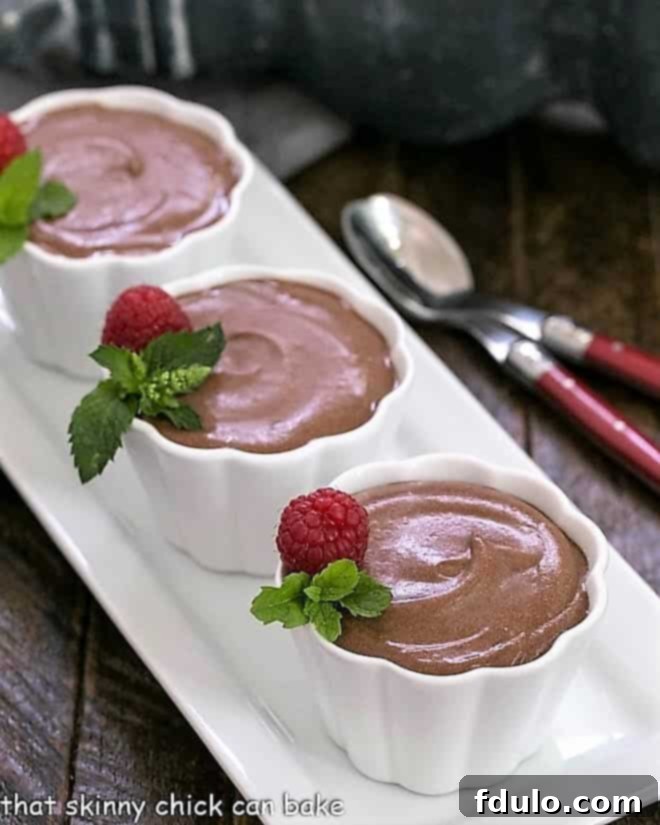
Why This French Chocolate Mousse Is a Must-Make
Few desserts evoke the same sense of luxurious indulgence as a perfectly crafted chocolate mousse. This particular recipe, a faithful rendition of Julia Child’s iconic Mousseline au Chocolat, offers more than just a sweet treat; it’s an experience. I recently hosted a “Mousse-a-Palooza” – a delightful gathering where friends and I blind taste-tested four distinct chocolate mousse recipes, each with its own unique approach. The contenders included a classic raw-egg version, an egg-free variant, a marshmallow-based recipe, and a quick blender mousse.
And the winner, by a clear and resounding margin, was this very recipe. Here’s why Julia Child’s French Chocolate Mousse is not just another recipe, but a culinary endeavor you simply must undertake:
- The Unmistakable Julia Child Seal of Approval: This is Julia Child’s celebrated French Chocolate Mousse, a testament to her mastery of classic French cuisine. Following her method means tapping into generations of culinary wisdom, resulting in a dessert that is consistently superb.
- Authenticity and Tradition: Crafted using time-honored French techniques, this mousse delivers an ultra-smooth and incredibly creamy texture that defines genuine French mousse. It’s a taste of true culinary heritage, far removed from instant mixes or shortcuts.
- Restaurant-Quality Elegance: This recipe has not only stood the test of time but also consistently produces results worthy of the finest restaurants. The rich depth of flavor, combined with its ethereal lightness, makes it an ideal finale for any special meal, transforming your dining table into a gourmet destination.
- Proven Superiority in Blind Taste Tests: As mentioned, this recipe triumphed over three other popular methods in a blind taste test. Its superior flavor, texture, and overall appeal were undeniable, making it the preferred choice among a diverse group of tasters. When a recipe wins on taste alone, you know it’s truly exceptional.
Making this mousse is more than just baking; it’s about appreciating the artistry of French desserts and creating unforgettable culinary moments. Its classic appeal and winning flavor profile make it an essential addition to any home baker’s repertoire.

Essential Ingredient Notes for Perfect Mousse
Crafting the perfect French Chocolate Mousse begins with understanding the role of each ingredient. Quality and proper preparation are key to achieving that desired silky, rich texture. Here’s a closer look at the components of this exquisite dessert:
- Large Eggs: The foundation of this classic mousse, eggs provide both structure and richness. For optimal results, separate your eggs when they are cold; the yolks are less likely to break when chilled, making the process cleaner. However, when it comes to whipping the egg whites, allow them to come to room temperature. Warm egg whites incorporate more air and achieve greater volume, resulting in a lighter, fluffier mousse.
- Sugar: Simple granulated sugar is all you need. It provides the essential sweetness and helps stabilize the egg yolks and whites.
- Kahlua or Grand Marnier: This is where you can add a subtle layer of complexity. While I opted for Kahlua, Julia Child’s original recipe often featured Grand Marnier, an orange liqueur. Both options complement the chocolate beautifully, adding a hint of their respective flavors without overpowering the main star. Choose based on your preference – coffee notes or a zesty orange twist.
- Semi-sweet Chocolate: The quality of your chocolate profoundly impacts the final flavor. Don’t skimp here! Ghirardelli chocolate bars are widely available and a good reliable option. For an even more exceptional experience, seek out high-quality brands. I personally love the depth and smoothness of premium semi-sweet bars. Avoid using chocolate chips, as they contain stabilizers that can prevent them from melting smoothly, potentially leading to a grainy texture. Look for bars specifically designed for baking or melting.
- Strong Coffee: A secret weapon in many chocolate desserts, strong brewed coffee or espresso does not make the mousse taste like coffee. Instead, it acts as a powerful flavor enhancer, intensifying the chocolate notes and adding depth and complexity. Even if you’re not a coffee drinker, trust this addition – it simply makes the chocolate taste “more chocolatey.”
- Unsalted Butter: Butter contributes to the mousse’s luxurious mouthfeel and rich flavor. While unsalted butter allows you to control the salt content precisely, I’ve found that using salted butter in a pinch still yields an excellent result. Just be mindful of any additional salt you might add.
- Salt: A tiny pinch of fine salt (not kosher, which has larger crystals) is essential. It acts as a counterpoint to the sweetness of the chocolate and sugar, balancing the flavors and preventing the mousse from being overly cloying.
Paying attention to these details will ensure your Julia Child French Chocolate Mousse is a decadent success.

The Great Mousse Showdown: Julia Child’s Mousseline au Chocolat vs. the Competitors
My passion for the perfect chocolate mousse led me to organize an epic tasting event, playfully dubbed “Mousse-a-Palooza.” I had strong ideas about what constituted my ideal chocolate mousse – the right balance of richness, lightness, and chocolate intensity. But would my friends and family agree? When I ask for honest critiques on a new recipe, the consensus is often, “We need to try it side-by-side!” I suspect it’s often a clever ploy for more baking, but I wholeheartedly agree that a true comparison demands a serious, direct taste test.
So, I gathered my dedicated “Skinny Chick tasting team,” a group of enthusiastic friends and family ready to put their palates to the test. We meticulously sampled four distinct chocolate mousse recipes, each offering a unique approach to this beloved dessert. Here’s a detailed breakdown of the contenders and our collective critiques, demonstrating why Julia Child’s creation emerged victorious:
- Julia Child’s Mousseline au Chocolat: This was the undisputed champion. Our tasters described it as remarkably fluffier and lighter than the others, yet still possessing an exquisite, smooth texture. Its sweetness was perfectly balanced, hitting that ideal note without being cloying. The overarching sentiment was that this mousse tasted exactly “like what you’d eat at a fine restaurant,” drawing comparisons to the luxuriousness of a classic French silk pie. It embodied true French elegance.
- Alton Brown’s Egg-Free Chocolate Mousse: This recipe was a strong contender, praised for its airy consistency and impressively dense chocolate flavor. Tasters found it to be intensely chocolaty and felt it offered a more “authentic” and pronounced chocolate experience, especially noting how the coffee addition truly amplified the chocolate. It was a close second, offering a rich, sophisticated option for those avoiding raw eggs.
- Blender Chocolate Mousse: This quick version had a texture akin to a rich pudding rather than a classic mousse. It was noted for being less sweet, and when freshly made, it reminded some tasters of Angelina’s (the famous Parisian cafe) exquisite hot chocolate. While smooth, it was somewhat syrupy, a characteristic that might have been amplified by being sampled before it was fully chilled. It offered convenience but lacked the refined lightness of the traditional methods.
- Nigella Lawson’s Instant Chocolate Mousse: This recipe landed in fourth place. Tasters found it to be the least chocolaty of the bunch and noted a distinctly grainy texture before it was fully cooled. The marshmallow component was quite noticeable, leading to a mousse that many considered too sweet. Like the blender version, it was sampled before reaching its optimal chilled state, which may have impacted its initial review. However, it’s worth noting that younger tasters, including my children’s teenage friends, still enjoyed it, highlighting its broader appeal for those who prefer sweeter, less complex desserts.
The “Mousse-a-Palooza” confirmed what I suspected: while there are many delightful chocolate desserts, Julia Child’s classic French technique truly produces a superior chocolate mousse, unmatched in its delicate balance of texture and profound chocolate flavor.

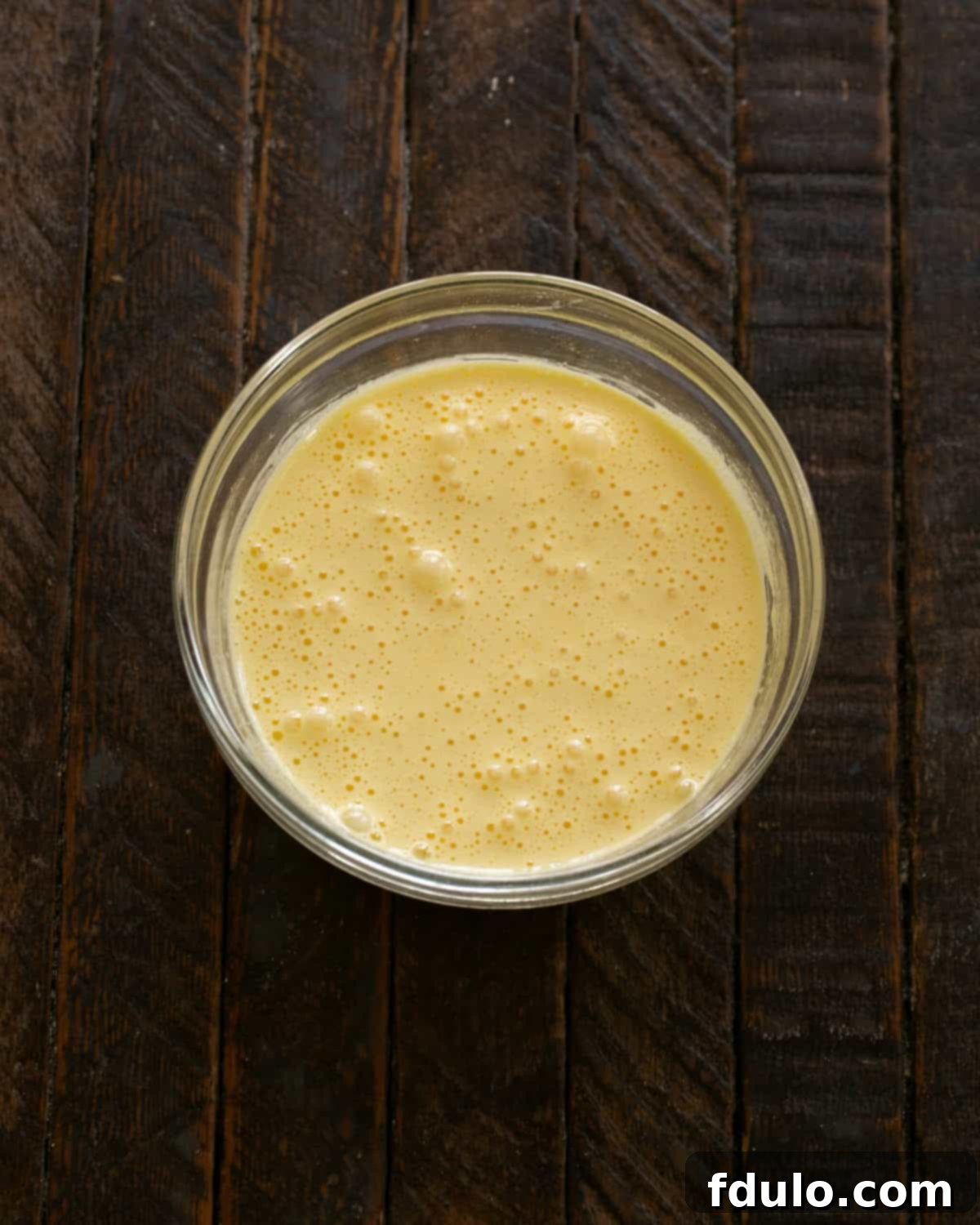
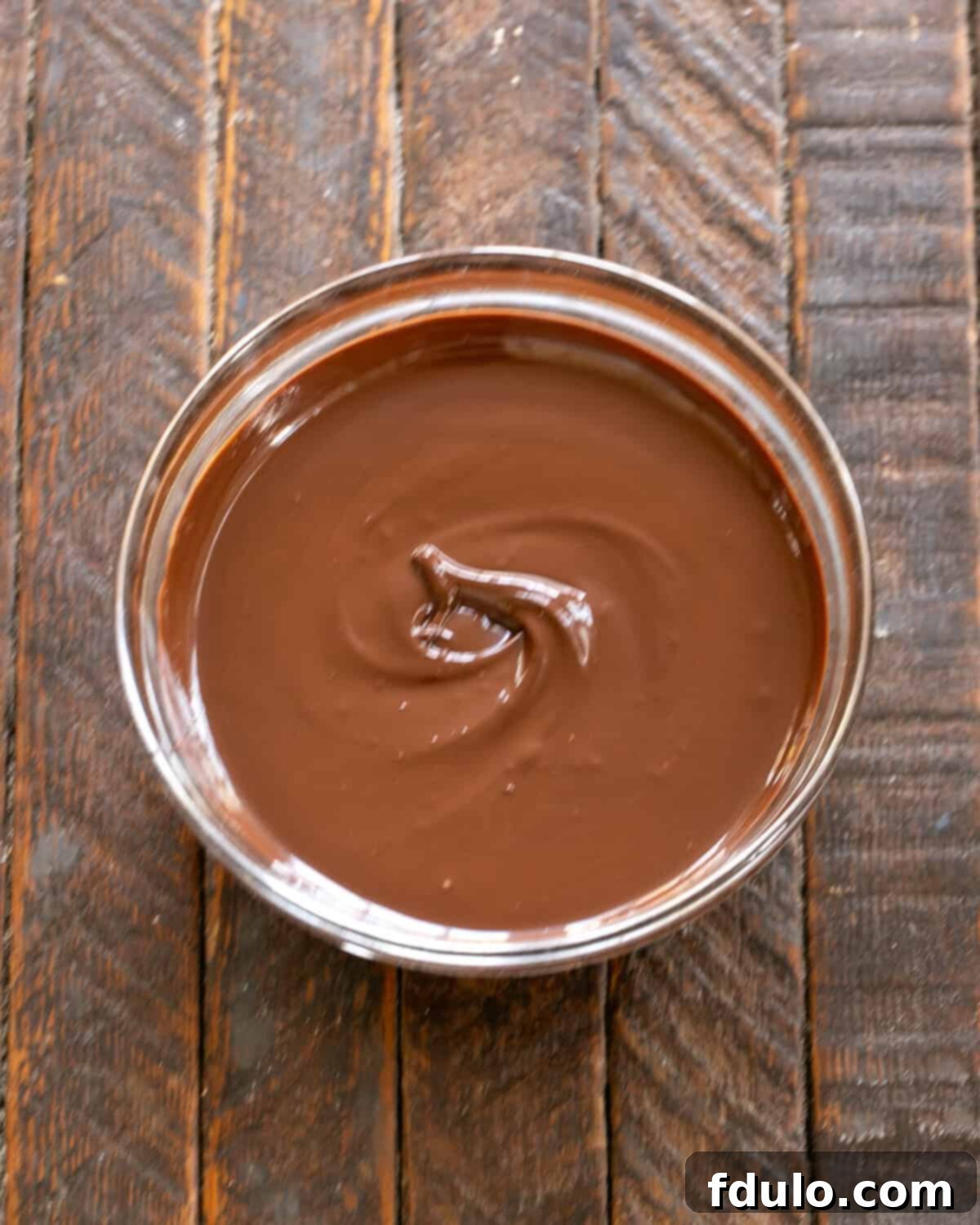

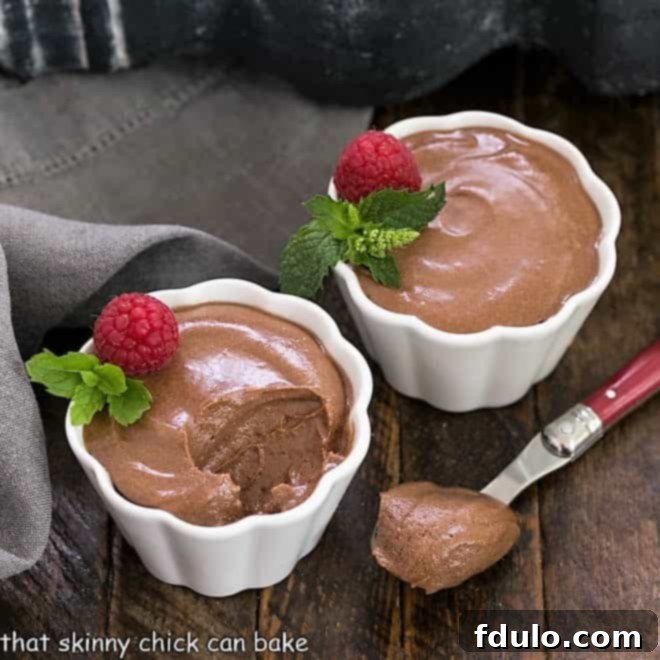
How to Make Julia Child’s French Chocolate Mousse
Follow these detailed steps to create a truly unforgettable French Chocolate Mousse:
- Prepare the Egg Yolk Mixture: In a mixing bowl, beat the egg yolks and ¾ cup of sugar together until the mixture is thick, pale yellow, and forms a ribbon when lifted (this will take several minutes with an electric mixer). Beat in ¼ cup of coffee liqueur (or Grand Marnier).
- Warm the Egg Yolk Mixture: Set this mixing bowl over a pot of water that is almost simmering (not quite boiling, you don’t want to scramble the eggs). Continue beating the mixture for 3-4 minutes. This gentle heating will pasteurize the yolks and thicken them further.
- Cool and Thicken the Egg Yolk Mixture: Immediately transfer the bowl over a larger bowl of ice-cold water. Continue beating for another 3-4 minutes until the mixture is cool to the touch and has a thick, mayonnaise-like consistency.
- Melt the Chocolate: In a microwave-safe bowl, combine the 6 ounces of chopped semi-sweet chocolate and ¼ cup of strong coffee. Microwave and stir at 30-second intervals until the mixture is completely smooth and melted. Be careful not to scorch the chocolate.
- Incorporate the Butter: Gradually whisk in 6 ounces of softened unsalted butter into the melted chocolate mixture, a little at a time, until it is fully incorporated and the mixture is smooth and creamy.
- Combine Chocolate and Egg Yolks: Beat the cooled chocolate mixture into the thickened egg yolk and sugar mixture until well combined. Set aside.
- Whip Egg Whites: In a separate, impeccably clean mixing bowl, beat the egg whites and a pinch of salt until soft peaks begin to form. Gradually sprinkle in 1 tablespoon of sugar and continue beating until stiff, glossy peaks form. The whites should hold their shape firmly.
- Fold in Egg Whites: Gently stir about a quarter of the whipped egg whites into the chocolate mixture to lighten it. Then, carefully fold in the remaining egg whites in two additions. Use a rubber spatula to gently incorporate them, preserving as much air as possible. Stop folding when just a few streaks of white remain; overmixing will deflate the mousse.
- Chill: Transfer the mousse into individual serving dishes or a large serving bowl. Refrigerate for at least 2 hours, or ideally overnight, to allow the mousse to set and flavors to meld.
- Serve: Serve chilled, optionally garnished with fresh berries and a dollop of lightly sweetened whipped cream. Bon appétit!
Tips for a Chocolate Mousse Tasting:
Hosting your own mousse tasting can be a fun and insightful experience. To ensure a fair and enjoyable comparison, consider these tips:
- Standardize Flavorings: To accurately compare the fundamental qualities of each mousse, try to keep secondary flavorings consistent across all recipes. For instance, if one recipe calls for Grand Marnier (an orange liqueur), consider replacing it with Kahlua or a similar coffee liqueur if that’s your chosen accent for other recipes, or vice-versa. The goal is to isolate the mousse’s core chocolate and texture profile.
- Consistent Chocolate Type: Even if a recipe specifies bittersweet or milk chocolate, aim to use a consistent type of chocolate – such as semi-sweet – for all samples. This ensures that variations in taste and texture are due to the recipe’s method rather than the chocolate’s inherent sweetness or cocoa percentage.
- Serve All Samples Chilled: The proper consistency of mousse is achieved through chilling. Ensure all samples are thoroughly chilled for at least 2 hours before serving. This allows the flavors to develop fully and the texture to set, providing the tasters with the intended experience. As our taste test revealed, even excellent mousses can be less palatable if not properly cooled.
- Gather a Diverse Panel: Invite friends who genuinely enjoy cooking, eating, and offering constructive feedback. A mix of palates can provide a comprehensive and nuanced review of each mousse, helping to identify subtle differences and overall preferences.
In my own “Mousse-a-Palooza,” Julia Child’s and Alton Brown’s recipes were the clear favorites, with Julia’s Classic French Mousse au Chocolat just barely nudging out Alton’s egg-free version. Both were prepared ahead and served perfectly chilled. The two quicker versions, while initially less favored, significantly improved after a brief chill in the refrigerator, becoming much more palatable. Nigella’s, in particular, had a distinct marshmallow taste, which placed it last among my adult testers, but was quite popular with my family and the teenagers present, proving that taste is indeed subjective!
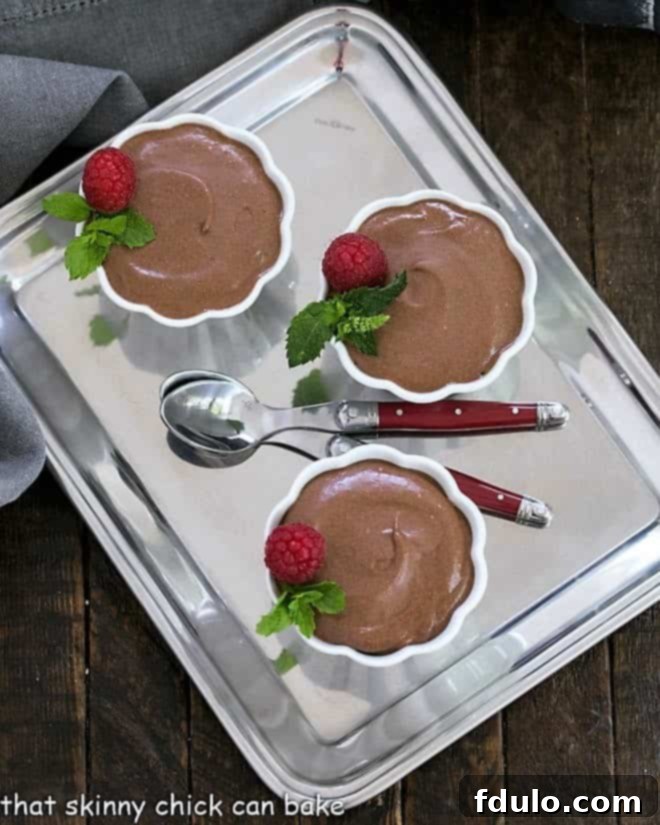
Expert Tips for Mousse Perfection
Achieving a truly sublime chocolate mousse involves more than just following steps; it requires an understanding of key culinary principles. Here are some expert tips to elevate your Julia Child French Chocolate Mousse to perfection:
- Prioritize Chocolate Quality: This cannot be stressed enough – the quality of your chocolate makes an enormous difference. Opt for a decent brand of baking chocolate. While chocolate chips are acceptable in a pinch, they often contain stabilizers that can prevent them from melting into a perfectly smooth, silky consistency, potentially resulting in a slightly grainy mousse. Invest in good quality chocolate bars like Ghirardelli or, if possible, even higher-end options for the best flavor and texture.
- Addressing Raw Egg Concerns: This recipe incorporates uncooked egg whites (though the yolks are gently heated). While delicious, consuming raw eggs carries a small risk of salmonella, a foodborne bacteria. To ensure safety, especially if serving to very young children, the elderly, pregnant individuals, or anyone with compromised immune systems, always use pasteurized eggs.
- Home Pasteurization: If pasteurized eggs aren’t readily available, you can pasteurize them at home. The general method involves holding the eggs at a temperature between 140°F and 142°F (60-61°C) for exactly 3 minutes. Heating them above this range will cook them, while lower temperatures won’t effectively kill bacteria. Resources like Simply Recipes offer detailed tutorials on how to safely pasteurize eggs at home.
- The Art of Whipped Egg Whites: The egg whites are crucial for adding the characteristic lightness and airiness to the mousse. They must be whipped to stiff peaks. For optimal volume and stability, ensure your mixing bowl and beaters are impeccably clean and free from any grease or fat. Even a tiny speck of egg yolk or grease will prevent the whites from whipping up properly.
- Temperature for Egg Whites: PRO-Tip: Egg whites whip best at room temperature. If you’ve separated your eggs when cold, allow the whites to sit out for 20-30 minutes. To speed this up, you can place the bowl of egg whites into a larger bowl of warm (not hot or boiling) water, ensuring the water level doesn’t reach the inside of the bowl.
- Flawless Egg Separation: To absolutely guarantee no yolk contaminates your whites, employ the “three-bowl method” when separating eggs: crack an egg into the first bowl, separate the white from the yolk, then transfer the separated white to a second “collection” bowl. The yolk goes into a third bowl. Repeat this for each egg. This way, if a yolk breaks in the first bowl, it only contaminates that one white, saving the rest of your collected whites. This technique is invaluable when a recipe calls for many egg whites, like an angel food cake!
- Mastering the Folding Technique: Folding is a gentle mixing technique essential for incorporating light, airy ingredients (like whipped egg whites) into heavier mixtures (like the chocolate base) without deflating them. To fold, place the lighter ingredient on top of the heavier one. Using a rubber spatula, make a circular motion down through the middle of the bowl, then sweep up along the side, and gently “fold” the mound of mixture on your spatula over and into the bowl. Rotate the bowl about 90 degrees and repeat. Continue this motion carefully until the mixture is mostly homogeneous, being careful not to overmix. A few small streaks of white are fine.
- Patience with Chilling: PRO-Tip: Refrigerate the mousse for at least a few hours, or ideally overnight, before serving. This crucial step allows the chocolate to firm up and the mousse to achieve its proper, luxurious consistency and deeply developed flavor. Don’t rush it!
- Storage: Store any leftover mousse covered tightly with plastic wrap in the refrigerator for up to 5 days. For longer storage, it can be frozen for up to 2 months. Thaw frozen mousse slowly in the refrigerator before serving.
By applying these expert tips, you’ll not only create a stunning dessert but also gain a deeper appreciation for the nuanced art of French patisserie.
Frequently Asked Questions About Chocolate Mousse
The word “mousse” is French for “froth” or “foam,” a name that beautifully describes the light, airy texture characteristic of these desserts. Chocolate mousse, in particular, is unique because it generally doesn’t require any additional thickeners like gelatin. The cocoa butter in the chocolate itself provides sufficient firmness once it cools and sets, creating that distinct melt-in-your-mouth texture. Other types of mousse, such as a Strawberry Mousse, often rely on gelatin to give them structure and stability. While most mousses we encounter are sweet, it’s worth noting that savory mousses, like a salmon mousse, also exist – though I suspect my family might be a bit hesitant if I served one for dessert!
Given its delicate ingredients, mousse must be stored properly to maintain its texture, flavor, and safety. Always keep mousse in the refrigerator until just before you plan to serve it. This is especially important for recipes that contain raw eggs and/or whipped cream, as maintaining a cold temperature significantly minimizes the risk of food-borne illnesses. Proper chilling also allows the mousse to fully set, achieving its ideal consistency and depth of flavor. Covered tightly with plastic wrap, it can last up to 5 days in the fridge.
Consuming raw or unpasteurized eggs carries a small but present risk of contracting salmonella, a type of food-borne illness. This risk can be substantially minimized by either purchasing eggs that have been pasteurized commercially or by pasteurizing them yourself at home. To pasteurize eggs at home, they need to be carefully held at a temperature between 140°F and 142°F (60-61°C) for precisely 3 minutes. It’s crucial not to exceed this temperature range, as it will begin to cook the eggs, and falling below it won’t effectively kill the bacteria.
If you choose to use raw eggs in your mousse, as I often do for the authentic texture they provide, it is imperative to exercise caution and avoid serving it to individuals who are at a higher risk. This includes very young children, the elderly, pregnant women, or anyone who is immune-compromised due to chemotherapy, illness, or other health conditions. For these groups, opting for pasteurized eggs or an egg-free alternative is the safest approach.
You May Also Like:
If you’ve fallen in love with the rich indulgence of chocolate mousse, explore these other delightful recipes that either feature this classic dessert or incorporate luscious chocolate in various forms:
- Chocolate Mousse Brownies from Kate of Diethood
- Chocolate Hazelnut Tart with Chocolate Mousse from Aimee of Shugary Sweets
- Dorie Greenspan’s Top Secret Chocolate Mousse
- Chocolate Truffle Mousse
- White Chocolate Mousse Recipe
- If you’re short on time, try this 5-Minute Chocolate Mousse Recipe
- More of the Best Chocolate Desserts Recipes
Stay connected for more delicious recipes! Follow on Instagram, Facebook, and Pinterest. Don’t forget to tag me when you try one of my recipes!
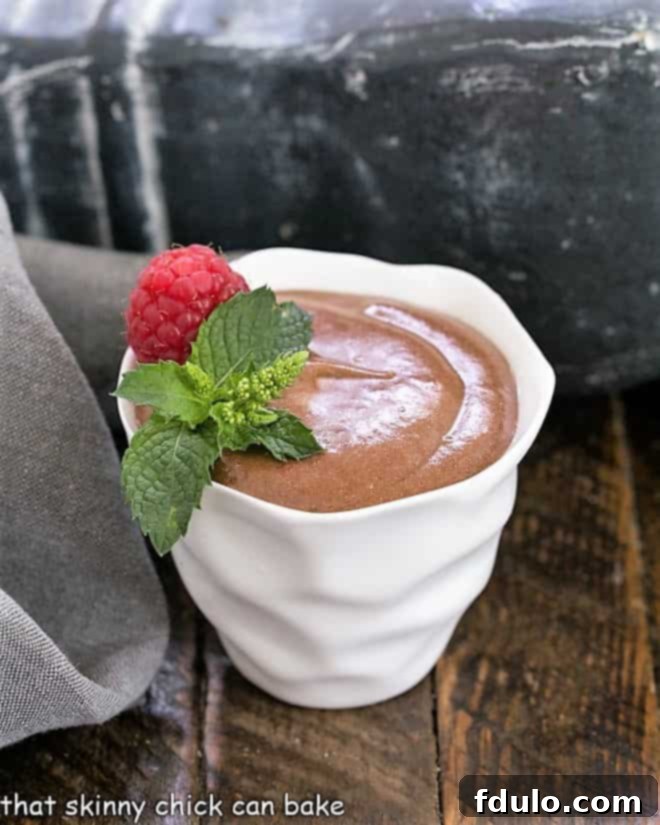
Mousseline au Chocolat Recipe
30 minutes
5 minutes
35 minutes
6 servings
Julia Child’s French Chocolate Mousse
Ingredients
- 4 eggs, separated*
- ¾ cup sugar
- ¼ cup coffee liqueur (such as Kahlua, or Grand Marnier for an orange flavor)
- 6 ounces semi-sweet chocolate, chopped
- ¼ cup strong coffee
- 6 ounces unsalted butter, softened
- Pinch of salt
- 1 tablespoon sugar (for egg whites)
- Lightly sweetened whipped cream and berries, optional for serving
Instructions
- Beat the egg yolks and ¾ cup sugar together until the mixture is thick, pale yellow, and forms a ribbon when lifted (will take a few minutes). Beat in the coffee liqueur.
- Set the mixing bowl over a pot of water that is almost simmering (not quite boiling) and continue beating for 3-4 minutes.
- Then place the bowl over a larger bowl of cold water and beat for another 3-4 minutes until the mixture is cool to the touch and thick, like mayonnaise.
- Combine the chopped semi-sweet chocolate and ¼ cup strong coffee in a microwave-safe bowl. Microwave and stir at 30-second intervals until smooth and melted.
- Whisk in the softened unsalted butter, a little at a time, until smooth and creamy.
- Beat the chocolate-butter mixture into the cooled egg yolks and sugar mixture. Set aside.
- In a separate, clean bowl, beat the egg whites and a pinch of salt until soft peaks form. Sprinkle in the remaining 1 tablespoon sugar and continue beating until stiff, glossy peaks form.
- Gently stir a quarter of the whipped egg whites into the chocolate mixture to lighten it. Then, carefully fold in the rest of the egg whites until most of the egg whites are incorporated and no large streaks remain. Turn the mousse into a serving dish or individual dessert cups.
- Refrigerate for at least 2 hours, or until thoroughly chilled and set. Serve with fresh berries and lightly sweetened whipped cream, if desired.
Notes
* For best results, separate eggs when cold, but allow egg whites to come to room temperature before whipping for maximum volume.
Use pasteurized eggs if serving to very young children, the elderly, pregnant individuals, or anyone with compromised immune systems. There is always a small risk of salmonella when consuming raw or undercooked eggs.
I used coffee liqueur (Kahlua) for this recipe, but Julia Child often used an orange liqueur like Grand Marnier, which also pairs wonderfully with chocolate.
Watch the Recipe Video
Recommended Products
As an Amazon Associate and member of other affiliate programs, I earn from qualifying purchases.
- OXO Good Grips 11-Inch Better Balloon Whisk
- KitchenAid Artisan Tilt-Head Stand Mixer with Pouring Shield, 5-Quart
- Silicone Spatulas
Nutrition Information:
Yield:
6
Serving Size:
1
Amount Per Serving:
Calories: 541Total Fat: 35gSaturated Fat: 21gTrans Fat: 0gUnsaturated Fat: 13gCholesterol: 186mgSodium: 77mgCarbohydrates: 52gFiber: 3gSugar: 48gProtein: 6g
